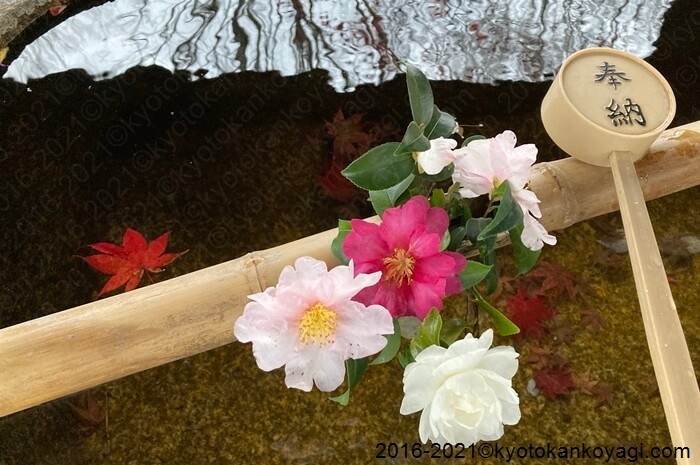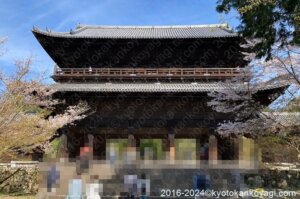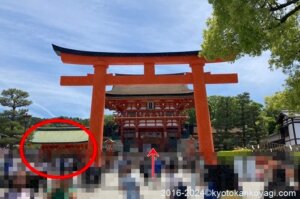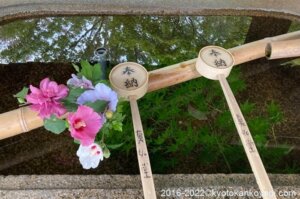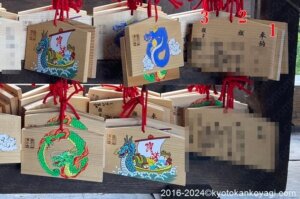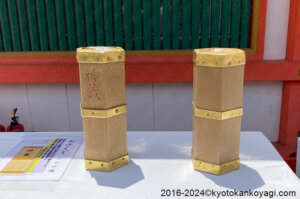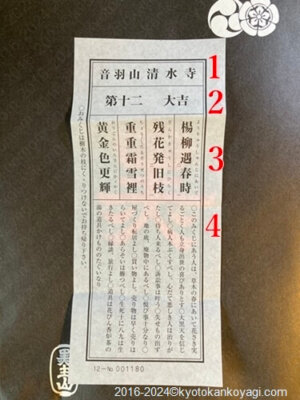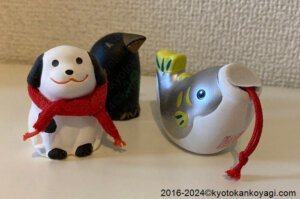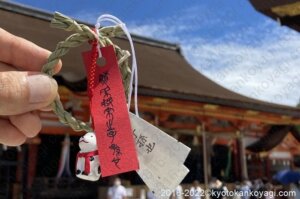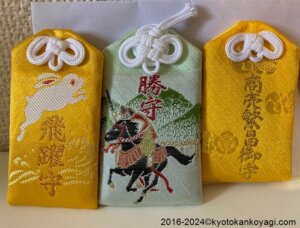- Introduction 概説
- Places to visit: Shrines and temples 神社とお寺
- Goriyaku ご利益
- The way to visit and worship 参拝方法概説
- Torii Gate/ Sanmon 鳥居/山門
- Chozu washbasin 手水
- Sanpai 参拝方法
- Ema 絵馬
- Omikuji おみくじ
- Omamori お守り
- Transportation: Bus and Train 交通
- Top 5 places to visit ベスト5
- Places not to be missed おすすめ
- World Heritage site 世界遺産
- Sakura 桜
- Autumn leaves 紅葉
- Matsuri 祭
Introduction 概説
This post is the comprehensive guide of Kyoto. The travel tips about the way visit shrines and temples, places to visit, Sakura, Autumn leaves, and so on.
We find spirit behind everything and detest anything anemic. These ideas make the foundations of our culture. Check out before visiting Japan.


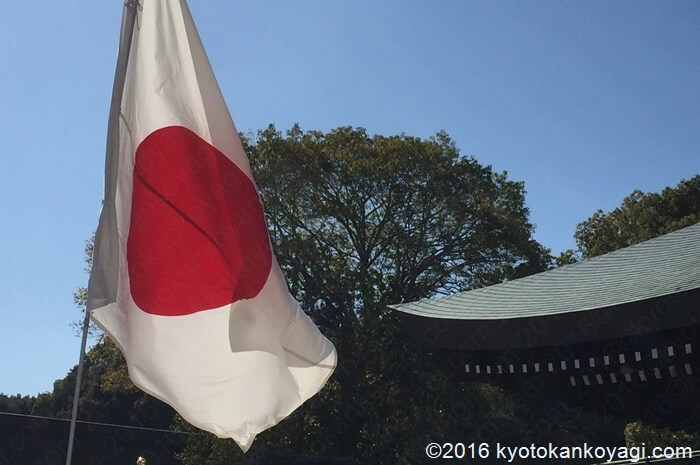
Places to visit: Shrines and temples 神社とお寺
Shinbutsu Shugo 神仏習合
Many “landmarks” in Kyoto are Shinto Shrines or Buddhist temple. Shinto is a religion indigenous to Japan originated thousands of years ago. Buddhism was originated in around 5th century B.C. It was introduced in the 6th century to Japan by way of China.Both have been fused with each other. We call this phenomenon Shinbutsu Sugo.

Shinbutsu Shugo is still alive though both religion was separated in terms of law in 1868. Due to this, we sometimes can’t tell them exactly.
How can we tell the difference? それぞれの違い
The easiest way to distinguish them is their name. They are suffixed with these words.
- Shinto Shrine; -jinjya, -sha, -Taisha, -jingu, -gu
- Buddhist temple; -tera, -dera, -ji, -in, -do, -an
Goriyaku ご利益
Goriyaku is a fortune deities enshrined in Shinto Shrine or Buddhist temple could give to us. Riyaku (Go is a prefix implies respect) is a term in Buddhism but it applies to Shinto and Buddhism.
The Goriyaku we could have depends on the deity enshrined. For example, in Shinto shrine, story in Japanese mythology, or ancient belief and so on. On the other hand, in Buddhism, Goriyaku depends on what we do. Deities would help us but the most important thing is our deeds because everything has cause and effect in Buddhism (Innen Shoki 因縁生起).
One of the most popular Goriyaku is Goen. Goen originally means Innnen Shoki but it usually means the bod between two things, especially persons. The latter is Goen for love seekers. There are many shrines and temples for Goen in this sense in Kyoto and popular ones are Yaska Shrine, Jisyu shrine (Now closed due to renovation), and Kifune shrine.
The way to visit and worship 参拝方法概説
There are ways to visit and worship Sinto shrine and buddhist temple individually but some ones are in common. Check out the following.
Torii Gate/ Sanmon 鳥居/山門
Shinto Shrine 神社
Torii Gate tells the sacred and the secular world. Every shrine has the main one. It is usually located in front of the main hall. In front of Torii, make a deep bow.
Buddhist Temple お寺
Make a deep bow and put your palms together (Gasho) in front of Sanmon gate.
Chozu washbasin 手水

In common
Chozu/ Temizu is a place we purify ourselves before entering Shinto shrine or Buddhist temple. This is based on Misogi in the stories in Japanese mythology. We do an abbreviated Misoghi at Chozu/ Temizu sha.

In Chozu/ Temizu sha, there a wash basin like this.
- Take a dipper in your right hand and pour the water over your left hand.
- Take the dipper in your left hand and pour the water over your right hand.
- Take the dipper in your right hand again
- Pour the water in your left hand (Use the left hand as a bowl).
- Rinse your mouth with the water hiding your mouth with your left hand.
- Raise the dipper to let the water run the handle of it.
Sanpai 参拝方法
Shinto Shrine 神社
Deities are enshrined in the main hall. Usually, there is a Saisen Box in front of the main hall. We donate Osaisen in the box and do Sanpai. Osaisen is offering to show gratitude for a fortune we are to have and Sanpai is a way for visit shrine or temple. It is usually translated as making wish but actually it is an act to show our gratitude to deity. If you have wishes, make wishes after that.
- Put a coin of bill into a Saisen Box. DO NOT THROW AWAY into the box.
- Ring a bell hanging down.
- Bow deeply 2 times.
- Clap your hands 2 times.
- Put your hands together.
- Pray.
- Bow deeply 1 time.

She does 2~7. Many people throw coins away in to the box but it is a wrong way.
Buddhist temple お寺
As Shinto shrine, deities are enshrined in the main hall. Usually, there is a Saisen Box in front of the main hall. We donate Osaisen in the box and do Sanpai. Osaisen is offering to show gratitude for a fortune we are to have and Sanpai is a way for visit shrine or temple. It is usually translated as making wish but actually it is an act to show our gratitude to deity. If you have wishes, make wishes after that.
- Put a coin of bill into a Saisen Box. DO NOT THROW AWAY into the box.
- Ring a bell hanging down.
- Bow deeply.
- Gassho (Put your palms together in front of your chest).
- Pray.
- Bow deeply again.
Ema 絵馬

In common
Afrer Sanpai, let us make our wish come true. Ema means ” Pictured horse.” In ancient time, people donated a horse to Shinto Shrine. As time went by, it was abbreviated to a painted hors on a small board.
Today, many kind of pictures are painted. Usually, Eto of the year or something to do with a shrine.

Write your wish on it. Be optimistic. DO NOT WRITE pessimistic words. We have Kotodama. Words have a spirit.
- 奉納 Date
- 願 Your wish
- 願主 Your name
Ema is available at Syamusyo (Shinto shrine) or Jimusyo (Buddhist temple) where we can buy Omamori, Omikuji, and so on.
Omikuji おみくじ

In common
Omikuji is a message from deity. Find a Shamusyo or Jimusyo. You’ll find a hexagonal prisms near there.
- Shake the hexagonal prism.
- A stick with number coming out.
- At Shamusho, tell your number.
- Get your Omikuji.
Many Omikuji is written in Japanese. Check out only 2 if you can’t understand Japanese. Omikuji in English are available in some places.
- Name of Shinto shrine/ Buddhist temple
- Kind of fortune
- Poem
- Fortune telling
- Usually, the name of Shinto shrine or Buddhist temple. This one is Omikuji of Kiyomizudera.
- Kinds of fortune. 大吉 (Daikichi)>吉 (Kichi)>中吉(Chu Kichi)>小吉 (Sho Kichi)>凶 (Kyo)
- Poem is a message from deity and the most important thing in Omikuij. It tells you the situation you are in and the way to cope with it.
- Fortune telling is the interpretation of the poem.
At some places, Kawaii Omamori are available.
Omamori お守り

In common
Omamori is amulet. The original one is a Jufu (Amulet of Taoism ) to protect people from epidemics.

Today, there are many kinds of Omamori. They are valid for a year. Have a new one one year later.
Transportation: Bus and Train 交通
There are many ways to go around Kyoto. The most convenient one is Kyoto City Bus. These days, the buses are crowded and take advantage of trains and taxi.

Top 5 places to visit ベスト5
Kiyomizudera 清水寺
Founded in the 8th century, Kiyomizudera temple is one of the most popular places in Kyoto. Today, it is the most popular and crowded destination for tourists. The iconic stage was constructed in the 11th century. The main hall and the stage was renovated recently.
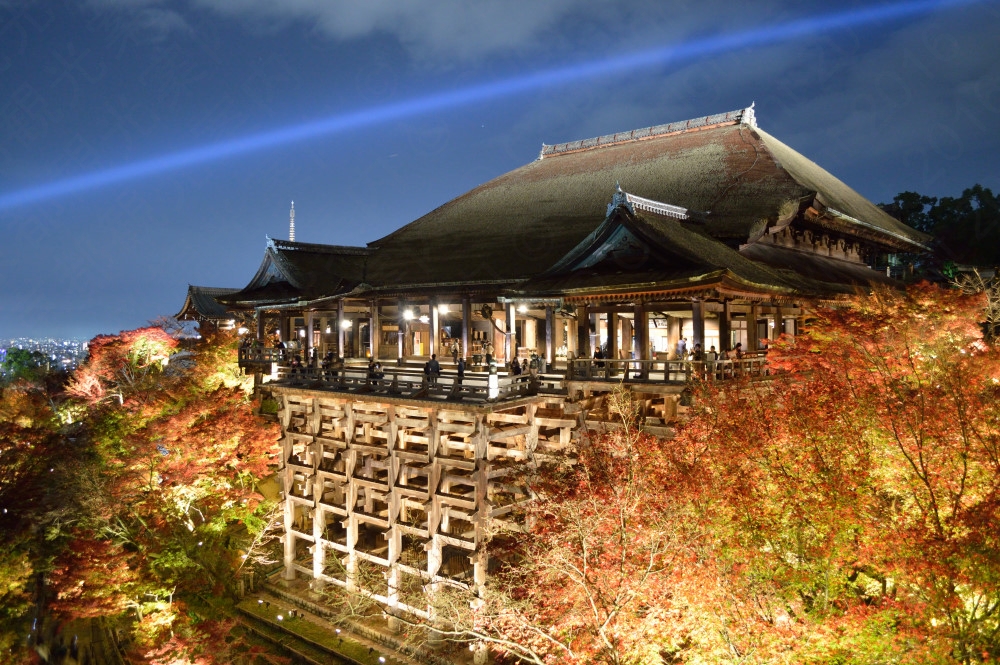
Fushimi Inari Taisha 伏見稲荷大社
Fuhimi Inari Taisha also is a popular and crowded place. The iconic Torii gates are not the entrance but the offering of merchants.
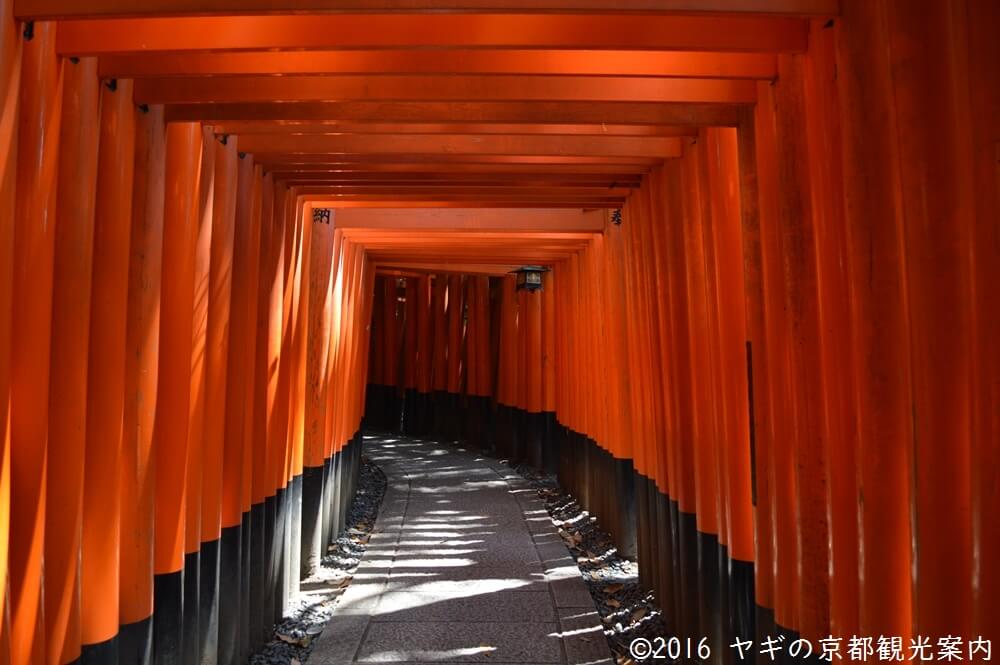
Kinkakuji temple 金閣寺
Kinkakuji was founded by Ashikaga Yoshimitsu, the thrid Shogun of the Ashikaga Shogunate in the 14th century. The wall is ornamented with sheets of gold. In 1951, it was renovated because a trainee monk set a fire the previous year.

Ryoanji temple 龍安寺
Ryoanji is famous for the Rock Garden built in 18th century. The garden is one of the best Karesansui garden in the world. It stands for a land scape of sea or river thug there are many opinion about the meaning of it.

Arashiyama Bamboo forest 嵐山竹林の小径
Arashiyama Bamboo forest is also a well-known place in Kyoto.
Places not to be missed おすすめ
Saihoji Temple 西芳寺
Saihoji temple, also known as Kodedera (Moss temple), is one of the most underrated place in Kyoto. Famous and important places like Kinkakuji, Ginkakuji, Ryoanji, and other places are under the strong influence of it.

Rurikoin Temple 瑠璃光院
Rurikoin is famous for Yuka Momiji, the reflection of Autumn leaves on the lacquered table. The reflection is one of the Mizukagami, the way Japanese people enjoy landscapes. We can visit there only spring and fall.


World Heritage site 世界遺産
Shinto shrine 神社
- Kamigamo shrine
- Shimogamo shrine
- Uji Kami shrine
Buddhist temple お寺
- Kiyomizudera temple
- Toji Temple
- Enryakuji temple
- Daigoji temple
- Ninnaji temple
- Byodoin temple
- Kozanji temple
- Saihoji temple
- Tenryuji temple
- Kinkakuji temple
- Ginkakuji temple
- Ryoanji temple
- Honganji temple
Castle 城
- Nijo castle
Sakura 桜
Sakura is the most famous flower in Japan. There are many kinds of Sakura and Kawazu Zakura kicks off the Sakura season of the year in late January or early February. Somei Yoshino, so-called Sakura blooms in late March or early April.

Autumn leaves 紅葉
The Autumn leaves many people into Kyoto every year. Like Eikando or Tofukuji, there are many famous places to admire them but I recommend temples with small garden. Famous places are so crowded.
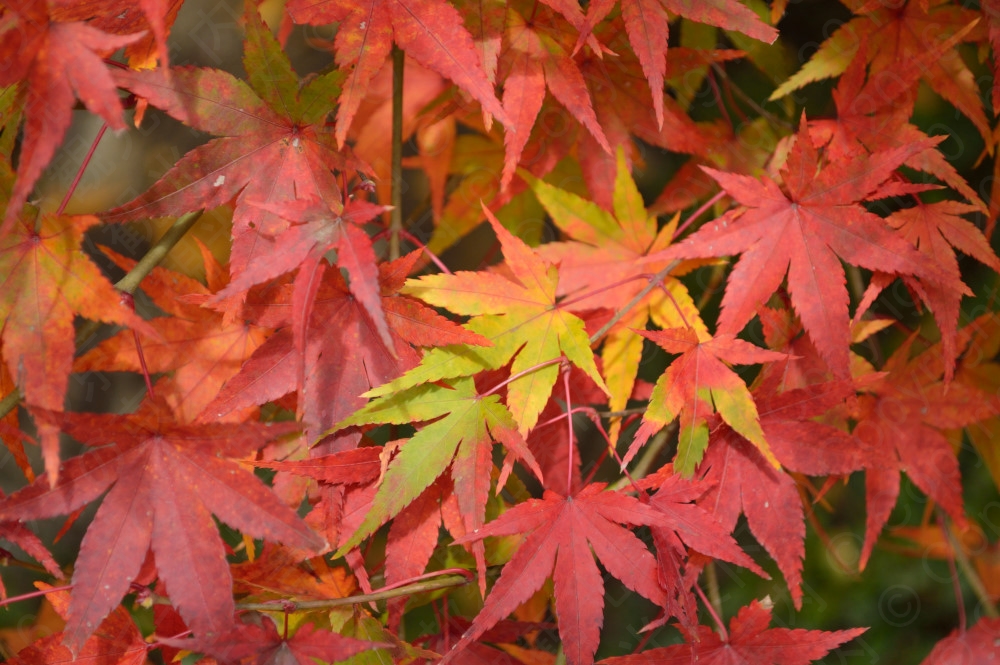
Matsuri 祭
What is Matsuri? 概説
Matsuri is a prolific word and have many meanings. One of the authentic aim is to make ourselves come alive with new-born Kami. We have many matsuri in Kyoto and the flowing is the famous ones.
Aoi Matsuri 葵祭
Aoi Matsuri is one of the oldest Matsuri in Japan. It is famous for the parade but the important rituals take place in Kamigamo and Shimagamo shrine. The authentic aim of it is to calm down Kamo no Ohkami in order to put down natural disasters.

Gion Matsuri 祇園祭
Gion Matsuri started to get rid of epidemics and prevent natural disasters in the 9th century. It is famous for Yamahoko parade but the most important ritual is Mikoshi Togyo. The deities visit us to save us.
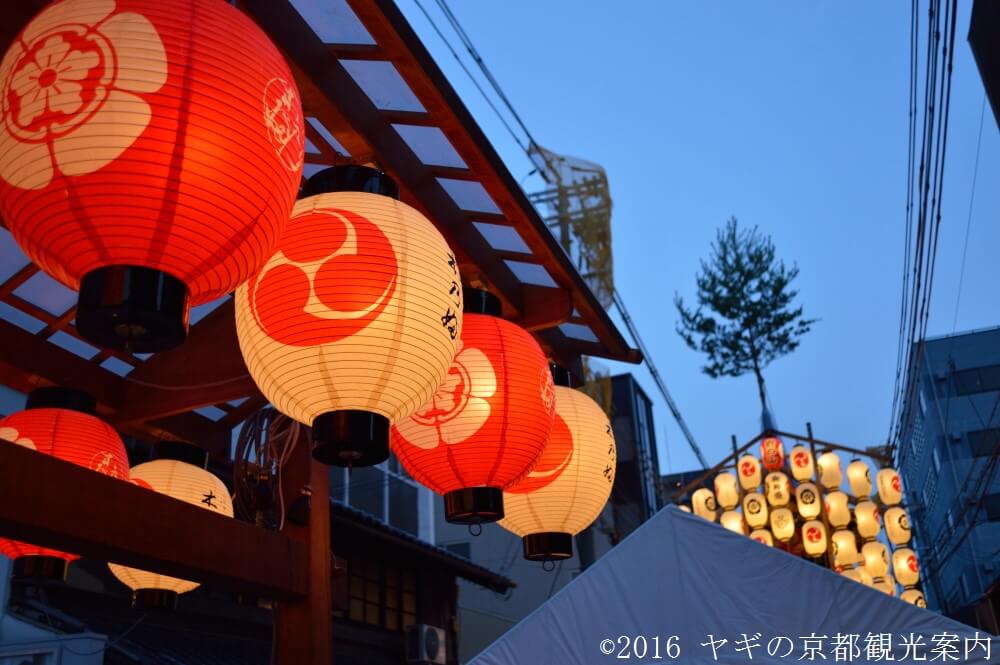
Jidai Matsuri 時代祭
Jidai Matsuri is not a like Aoi Matsuri or Gion Matusri. In 1868, Emperor Meiji left Kyoto and the capital moved to Tokyo as a matter of fact. Kyotoites afraid to be forgotten, and started Jidai Matsuri in 1895. In the parade, we can enjoy the history of Japanese outfits.

Other Matsuris その他の祭
Not famous, but interesting ones.



